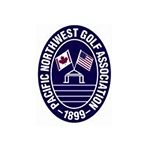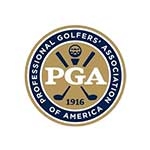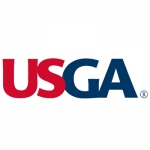Rule of the Month: Blame It On the Rain
By Sr. Rules Officials: Pete Scholz and Terry McEvilly
Click Here for the Rule of the Month Archive
Course Conditions Created by Poor Weather
First, the bad news. While the Rules of Golf offer relief from course conditions created by poor weather, the relief provided is limited to free relief from temporary water and from an embedded ball. Soft mushy ground is nothing more than soft mushy ground and unless the Committee has declared it to be ground under repair, there is no free relief.
Now, for the good news. Committees in charge of a competition may provide additional free relief. Local Rules E-2 Cleaning Ball or E-3 Preferred Lies, may be adopted which would allow players to lift and clean the ball or possibly play from a better location selected by the player. The Local Rules provide for a much more enjoyable round of golf when the conditions are not ideal.
Test your knowledge of dealing with course conditions created by poor weather with the following questions.
Questions: True / False
- The Rules provide free relief for an embedded ball anywhere on the course except in a bunker.
- Free relief from temporary water is only available when the ball lies in the general area.
- An embedded ball may be lifted and another ball substituted and dropped within one club-length of a spot right behind where the ball was embedded.
- When a player’s ball is on the putting green, if an area of temporary water interferes on the line of play, the player may take free relief by placing a ball on the nearest point of complete relief.
- When proceeding under the Preferred Lies Local Rule E-3, the player is required to use the original ball and place it within a specified relief area, such as one club-length.
- Generally, the Preferred Lies Local Rule E-3 may only be used in the general area of the course that is cut to fairway height or less.
- When proceeding under the Cleaning Ball Local Rule E-2, the player is required to use the original ball and replace it on the original spot.
- If the Local Rule Cleaning Ball E-2 has been adopted for the entire general area of the course, a ball in the rough may be marked, lifted, cleaned and replaced on the original spot.
- If the Committee adopts the Preferred Lies or Cleaning Ball Local Rules, it should be enacted before any player begins the round in a stroke play competition and must encompass the entire golf course.
- Both Local Rules, Cleaning Ball E-2 and Preferred Lies E-3, may not be adopted for the same competition.
Answers:
- False. Rule 16.3a. Free relief from an embedded ball is only available when the ball is in the general area. Therefore, there is no free relief when the ball lies in a bunker or a penalty area. Additionally, there is no free relief when the ball is embedded in sand in a part of the general area that is not cut to fairway height or less (e.g., sand dunes).
- False. Rule 16.1a(2). Free relief from temporary water is allowed anywhere on the course except in a penalty area. For temporary water to be present, it must be visible before or after the player takes his or her stance and without pressing down excessively with his or her feet.
- True. Rule 16.3b. If the player is entitled to free relief, the relief area is measured by one club-length from the reference point, which is a spot right behind the ball. This relief area must be in the general area of the course and not closer to the hole than the reference point. When dropping a ball in this area, the player may use the original ball or substitute another ball.
- True. Rule 16.1d. This is true even if the temporary water is not on the putting green but may still interfere on the line of play. If the player chooses to take free relief, he or she is required to place a ball at the nearest point of complete relief which could be off the green in the general area, but not closer to the hole than its original spot.
- False. Local Rule E-3. Most of this question is correct except that the player is not required to use the original ball. He or she may lift and clean the original ball or substitute another ball to complete the play of the hole.
- True. Local Rule E-3. Using this Local Rule outside the areas cut to fairway height or less is not recommended and could result in a player receiving a greater advantage than what the Rule intends. Therefore, in only rare occasions should it be used outside areas cut to fairway height or less.
- True. Local Rule E-2. Under this Local Rule, a player must mark the spot of the ball before lifting it and the original ball must be replaced on the original spot.
- True. Local Rule E-2. The Cleaning Ball Local Rule E-2 differs significantly from the Preferred Lies Local Rule E-3 in that it may be adopted for the general area including the rough. It also requires that the original ball (no substituting) is replaced on the original spot.
- False. Local Rules E-2 & E-3. While it is true that the Local Rule should be enacted prior to any player beginning the round in a stroke play competition, the Committee may choose to adopt the Local Rules for only certain problematic holes and require players to play the ball as it lies on other holes.
- False. Local Rules E-2 & E-3. There is nothing in the Rules prohibiting a Committee from adopting both Local Rules for a competition. Doing so would allow a ball in the fairway to be lifted and placed in a preferred lie by the player and a ball in the rough to be lifted and cleaned but must be replaced in the original lie.








